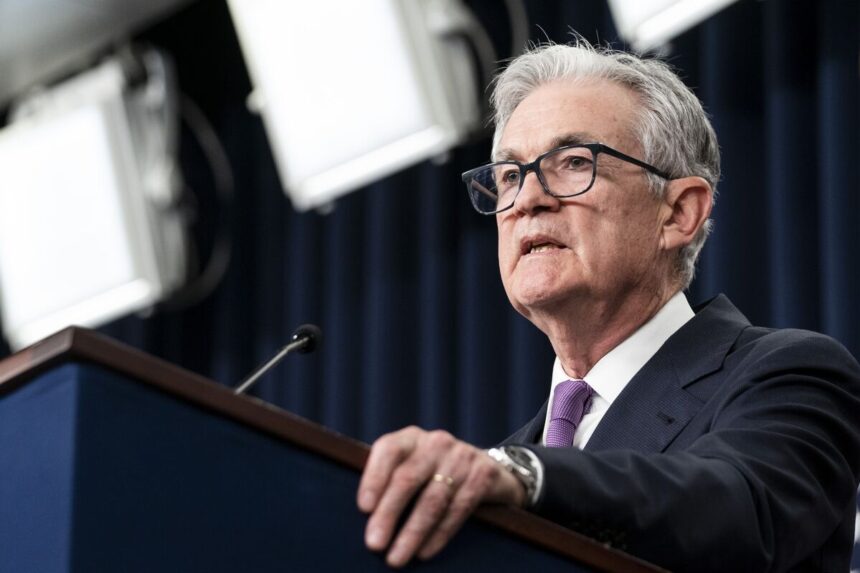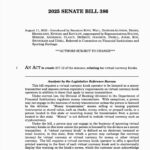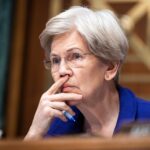Fed Chair Jerome Powell’s Jackson Hole Speech Insights
During his speech at this year’s Jackson Hole Economic Policy Symposium on Friday, Fed Chair Jerome Powell addressed the tension between rising inflation risks and a fragile labor market. He noted that the political landscape increases the likelihood that his eventual successor may approach interest rates with less caution.
Powell remarked that the “effects of tariffs on consumer prices are now clearly visible” and will continue to have an impact, albeit with uncertain timing. The headline PCE inflation registered at 2.6% in July, while core inflation stood at 2.9%, marking a shift in goods prices from last year’s declines to increases.
He characterized the labor market as exhibiting a “curious kind of balance,” with payroll growth decelerating to approximately 35,000 a month in recent months from 168,000 in 2024, alongside an unemployment rate of 4.2%.
The cooling of immigration, softening labor force growth, and a lower breakeven pace of hiring needed to maintain stable joblessness contribute to this fragility. Overall, Powell indicated that near-term risks are “tilted to the upside” concerning inflation and “to the downside” in terms of employment, suggesting a cautious approach rather than a swift easing cycle.
Moreover, he adjusted the framework regarding monetary policy.
The Fed moved away from the 2020 “average inflation targeting” to reinstating a flexible 2% target and clarified that employment levels could exceed estimated maximums without immediately necessitating interest rate hikes, as long as price stability is maintained.
Powell emphasized, “We will not allow a one-time increase in the price level to become an ongoing inflation problem.” He stated that policy is “not on a preset course,” and while a meeting in September is still possible, the threshold for an accelerated series of cuts appears high unless upcoming data shows weakness.
Political Dynamics and Its Impact
This macroeconomic perspective is set against a new political backdrop that markets must consider. Powell’s current term concludes on May 15, 2026, and he has expressed his intention to serve until then. Former President Donald Trump has criticized Powell, advocating for lower rates; however, legal protections prevent a president from dismissing a Fed governor or chair due to policy disagreements.
Trump can announce his preferred candidate for Powell’s replacement well before 2026, allowing markets to adjust to a potential chair who may be more dovish and accepting of growth risks than Powell. This anticipated change will influence the trajectory of interest rates up to 2026, even if the following FOMC meetings depend on data.
Political tensions resurfaced on Friday when Trump publicly threatened to dismiss Fed Governor Lisa Cook over alleged mortgage fraud if she did not resign. Like Powell, governors enjoy strong protections and can only be removed for cause. Markets interpreted this less as an urgent governance threat and more as an indication that personnel pressures on the Fed might increase, creating uncertainty around future leadership and communication.
Future Projections for Monetary Policy
The speech suggests a gradual and less aggressive easing path in the fourth quarter of 2025 unless inflation shows a significant decline. The pass-through of tariffs keeps goods prices sticky, while services prices are expected to decrease only slowly, which suggests that front-end yields may remain firm, and the curve could steepen only if growth data weakens.
A future chair that adopts a less cautious approach could compress term premiums by signaling a quicker road to neutral; however, until then, rate volatility is expected to remain high, with potential rallies experiencing limitations.
Implications for U.S. Equities
A measured Fed supports the narrative of a soft landing but does not favor rapid multiple expansions. Earnings growth can sustain benchmarks, yet growth stocks that are sensitive to rates may face vulnerability to unexpected inflation or wage increases that could delay cuts.
If markets begin to factor in a chair disposed to easing in a higher-inflation environment, cyclicals and small-cap stocks might benefit, though credibility risk could elevate if inflation expectations fluctuate. For now, equities are influenced by the intervals between each inflation report, payroll update, and Fed communication.
Crypto operates at the intersection of liquidity and the inflation narrative. A prolonged higher interest rate stance could suppress speculative investment in altcoins and crypto-related equities, including miners, exchanges, and treasury-heavy firms due to sustained elevated funding costs and tightened risk budgets.
Simultaneously, persistent inflation above target supports the hard-asset narrative and fuels demand for assets with scarcity or settlement finality. This scenario favors bitcoin and large-cap, cash-flow-positive tokens over long-duration, speculative projects until the Fed demonstrates more certainty regarding cuts.
If a successor chair in 2026 is seen as less cautious, the liquidity cycle could shift more favorably for crypto; however, this transition may come with heightened volatility as traders assess leadership, Senate confirmations, and relevant data.
Even if the Fed opts for rate cuts in September, as currently appears likely, Powell’s comments suggest a glide path determined by inflation expectations rather than market optimism. The impact of housing transmission is muted by mortgage lock-in, implying that minor rate cuts may not immediately stimulate growth.
Global monetary easing in other regions adds a slight liquidity boost, but the direction of the dollar and term premiums will depend on whether U.S. inflation behaves like a one-time tariff shock or evolves into a more persistent issue. In the former case, the breadth of crypto could improve, and risk may diversify beyond dominant players; in the latter, leadership may remain limited, and rallies could wane in the face of hot data.
For Treasurys, this indicates potential for wider term premiums until leadership becomes identifiable; for equities, it could imply rotations and shifts in factors; for crypto, it suggests a stronger medium-term liquidity outlook, albeit with more tumultuous trading in the near term.
Powell requested patience and data as tariffs elevate prices and the jobs market slows. Markets will now need to navigate this cautious stance through the fourth quarter of 2025 while also accounting for the realistic possibility of a less cautious Fed chair stepping in during 2026. This dual strategy will make the upcoming year a test of patience for Treasurys, a challenging endeavor for stocks, and a volatility-focused trade for crypto—with outcomes hinging on whether inflation proves to be transitory enough for the current Fed to implement cuts or persistent enough that the next one decides to intervene.


















